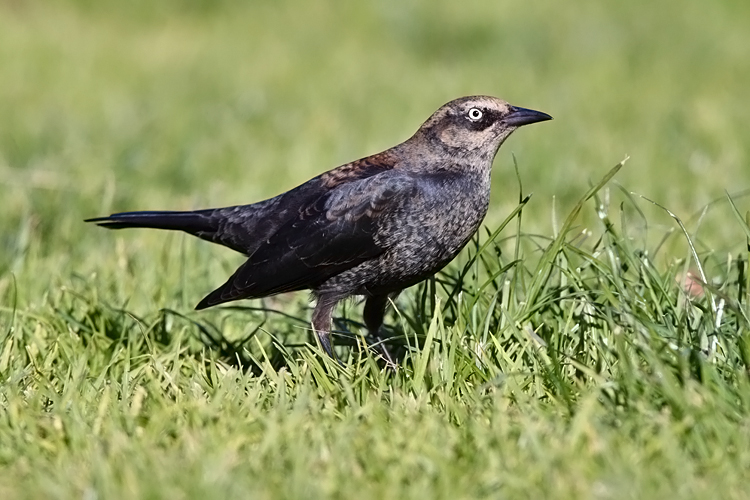
Date: 2008-12-30
Lens: Canon 600mm IS F4 + 1.4x II Converter

 Rusty Blackbird
Euphagus carolinus
Rusty Blackbird
Euphagus carolinus
 Description
Description
The Rusty Blackbird receives its name from the rust-colored feather tips that it has during winter (basic plumage). The rusty feather tips often continue to exist as the birds changes into its darker breeding plumage. The Rusty Blackbird mostly feeds on insects and other small invertebrates during the summer and acorns, pine seeds, and fruit during winter. Strangely, this bird has been found to sometimes feed on other birds, such as sparrows, robins, and snipes amoung others.
Bird surveys for this species over the last 40 years have shown a decrease in population of 85-98%. For this reason it is on the Audubon watchlist, which lists imperiled bird species. Low bird densities and remote breeding habitat make it difficult to determine a clear trend in population numbers.
General: 8 to 10 inches in length.
Adult Male Alternate: Entirely dull black. Dull metallic greenish sheen on upperparts. Yellow eyes. Black, narrow, pointed bill. Black legs and feet. Rounded medium-long tail.
Adult Male Basic: Similar to alternate plumage, but with rusty feather tips, especially on face, nape, and back. Yellowish-brown eyestripe.
Adult Female Alternate: Brownish-gray upperparts. Face and underparts slightly paler gray. Dark gray back. Blackish wings and tail. Yellow eyes. Black, narrow, pointed bill. Black legs and feet. Rounded medium-long tail.
Adult Female Basic: Similar to alternate plumage, but with darker feathers that have rusty-brown tips. Buffy face with yellowish-brown eyestripe.
Immature: Similar to adult basic, but with more rusty feathers.
Breeds in wet forests. Winters in swamps, wet woodlands, and pond edges.
 Nesting
Nesting3-6 bluish-green to pale gray eggs with variable amounts of brown markings. The eggs have a 14 day incubation period. Fledging occurs in 11-13 days. The nest is a large open cup with an outer layer of twigs, grass, and lichens. The nest is built in a tree or shrub near water. Both sexes feed the young.